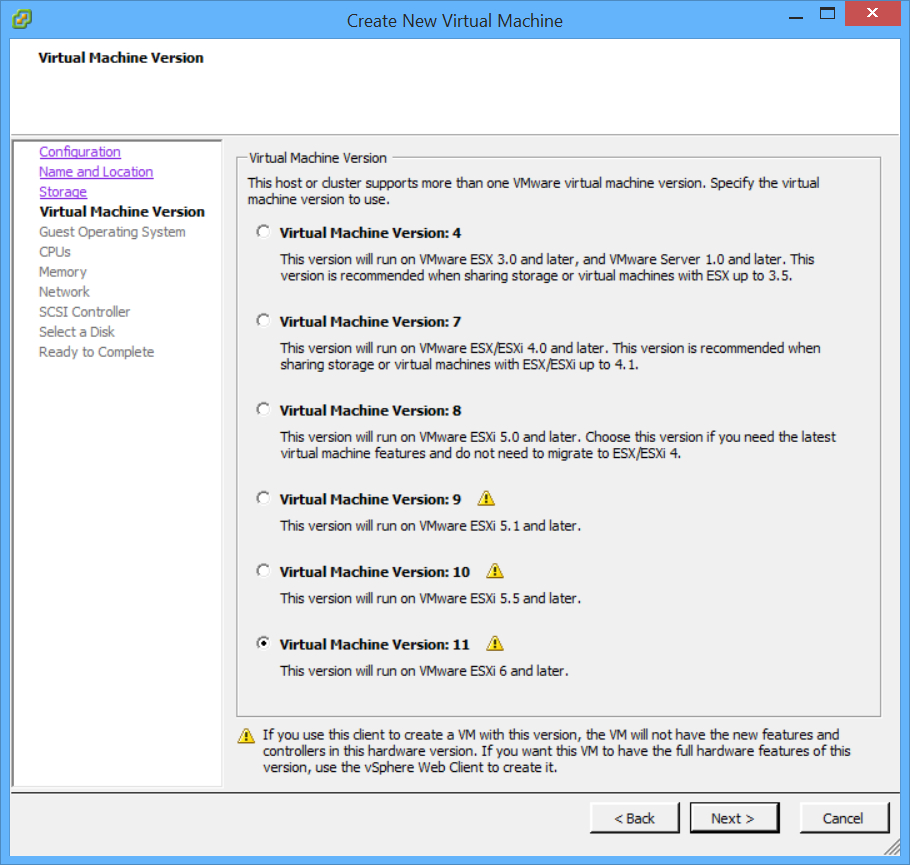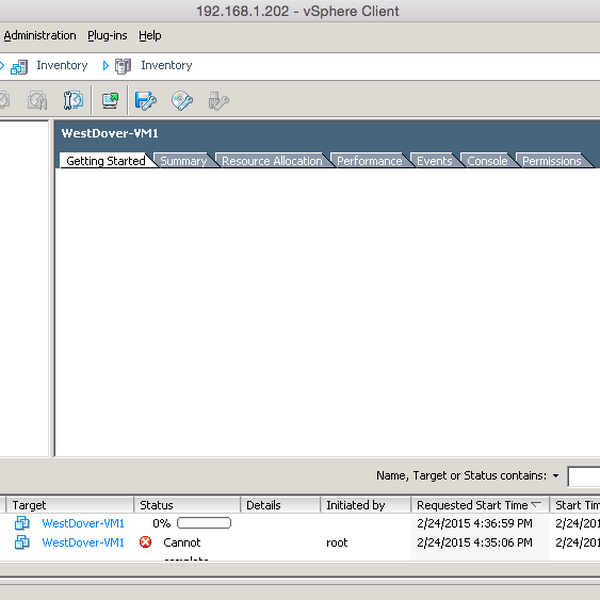A tutorial on how to get mac or linux running vSphere client using Wine. I used version 5.1 of the ESXi due to hardware issues with version 5.5, but it might be possible to run version 5.5. VMware vSphere 6.0 is available exclusively on the vSphere ESXi hypervisor architecture. ESXi is the latest hypervisor architecture from VMware and, as of the vSphere 4.1 release, VMware’s recommended best practice when deploying VMware vSphere. Users can upgrade to ESXi (from ESX) as part of an upgrade to vSphere 6.0. Important information for VMware vSphere 7.0 - Attempting to upgrade ESXi to version 7.0 using some OEM/partner images, bundles or addons may fail. Fresh/clean installs of ESXi 7.0 are supported when OEM/partner images are used. For this and other important deployment information prior to upgrading VMware vSphere 7.0, see.
- Download VMware vSphere. Run fewer servers and reduce capital and operating costs using VMware vSphere to build a cloud computing infrastructure.
- VMware ® vSphere. Use Windows session authentication. Download Enhanced Authentication Plugin. Firefox 34 or Chrome 39 are required on Windows. A minimum of Firefox 34 or Chrome 39 are required on Mac OS X. Read the vSphere Web Client help for details.
Update 2
In early 2016, VMware began including the embedded HTML5 host client for managing ESXi in version 6.0 U2 from your web browser. Meant to connect to and manage single ESXi clients, it’s a great solution for users getting started with a dedicated Mac (like a quad-core mini or a Mac Pro) running VMware at MacStadium.
Update
The venerable William Lam of virtuallyGhetto noticed we were missing ESXi Embedded Host Client. He wrote a great article on this tool explaining its use that's worth checking out. We're ready to add any other suggestions that our readers may have.
Here’s the Situation
You’ve just had a Mac mini setup with ESXi to move all of your software onto one machine. VMware ESXi is a great option to get the most out of a single server at MacStadium as it’s the only enterprise option available for virtualizing OS X, Windows, and Linux on one machine.
You’re probably using MacStadium because you personally use a Mac (let’s call it a MacBook Pro) for day-to-day work and recognize the potential of a hosted Mac. Rather than continue paying more for shared hosting at another provider (without OS X of course) you’d like one place to manage all of your servers.
The next step is obviously connecting to and managing your VMware single-server ESXi environment. This is where the VMware vSphere software suite comes into play. But wait, you've only got the MacBook Pro! Unfortunately for developers working on Apple hardware locally, there is no native VMware vSphere client available for OS X. Don’t give up, though; there are alternatives.
Will There Ever be a Desktop App for OS X?
There was a glimmer of hope for Mac users in a preview of VMware vSphere 6.0. A thick (desktop) client was included that could be installed locally by Windows and Mac users (and presumably Linux in the future). Unfortunately, it disappeared in the next release candidate and has not been seen again.
Can I Use vSphere Web Client?
In older versions of VMware vSphere, a Windows desktop was the primary means of accessing vSphere environments. Now though, more and more users are taking advantage of the vSphere web client to access vSphere.
The catch with vSphere Web Client is that it’s only accessible if you have vCenter. On a single-server solution running ESXi, that means $99/month. Don’t give up hope just yet.
What About VMware Fusion?
Vsphere Client For Mac 2019
If you’re a recent convert to virtualization and tested the waters in VMware Fusion Pro on your local Mac machine, you’re in luck. VMware Fusion Pro for Mac includes the only truly native client for accessing your remote vSphere environment from OS X. If you’re not already using Fusion Pro is it worth it to purchase a license? At $200, it might be a hard sell for managing your single ESXi host.
Can I Use Windows on my Mac?

If you’ve got Boot Camp on your Mac, you could save all of your work to a remote or shared partition, log out, reboot into Windows, open up your shared partition or remote folder, open the vSphere client, and finally connect to vSphere and manage your virtual machines. That’s a lot of steps but it is a viable solution. You could also run a Windows VM in VMware Fusion or Workstation Player.
Is There Command Line Access?
Yes, you can partially manage your ESXi server using SSH. You’ll have to have access to a vSphere client temporarily to enable SSH access in ESXi. vCLI, the VMware vSphere Command-Line Interface, is also an alternative for management from a Linux or Windows system.
Does MacStadium Offer any Alternatives?
For single-server ESXi installations, we can make sure your server is always available whenever you need access from one of the above options. If you are in a testing phase and plan to move to a multi-host ESXi cluster, there is great news. We offer vCenter to all private cloud environments. A team of users on Mac’s can all manage vSphere using the included vSphere Web Client.
Don’t hesitate to reach us over live chat or by opening a support ticket if you have questions or need help with your Mac servers running ESXi.
References
To install wine on Linux:
• Follow the instructions found here
To Install wine on Mac:
• First install Homebrew (run this in Terminal):
• Then run this command to finish the setup:• Once Homebrew is installed now wine can be installed:
**Note: If any errors occur, feel free to post comments and also look at this webpage for more help.• Go to the ip address of the ESXi host. (EX: http://192.168.1.202/)
**Note: Ignore any security warnings that your browser might bring up.

• Download the vSphere client by clicking on the link. A .EXE file should start downloading.
• Run the installer (replace the directory path with the path to your .exe file):
• Follow all the instructions in the installer.• If you get a error because the .NET framework needs to be installed I will post about how to fix that later.
• MOST of the time, a error will appear saying the the hcmon driver failed to install. DO NOT CLICK CANCEL.
• Navigate to the /.wine directory, and temporarily move it to your desktop. (Finder - Go - Go to folder - ~/.wine)

Vm Remote Console Download
• Now you can click cancel, the installer will say it failed to install, this is fine, close the installer.
• Now you can move your .wine folder back to its original place (/Users/[name]/.wine)
• The vSphere client should now be installed.
• In Terminal navigate to the folder where the client exe is located (not the installer):
• Then run the Client with this command: • If a screen opens up asking for a username and password then everything is working.• In the Host Box, type the Host's IP address (the one that we used to download the installer).
Vsphere Client For Mac Download
• Then put in your username and password (default username is 'root').
• If you are brought to a screen that asks about credentials and certificates, click Ignore.
• If all works, then the client should connect!
